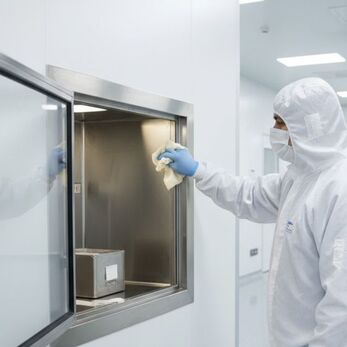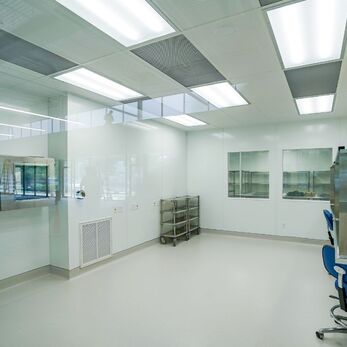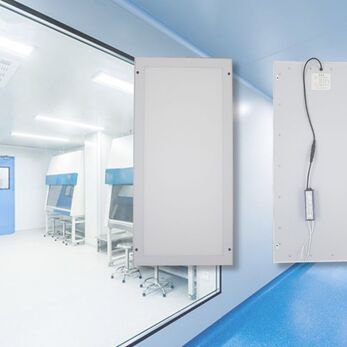5 Core Tools
The 5 Core tools are a set of critical methods used by businesses to implement the IATF 16949 quality management system.
Together with VCR, let's find out what these 5 Core Tools are and how to effectively apply them!
5 Core tools
What is IATF 16949?
IATF 16949 is a technical specification aimed at developing a quality management system for continuous improvement, with a strong emphasis on error prevention and reduction of variability and waste in the automotive industry's supply chain and assembly processes. It is based on the ISO 9001 standard and was first published in June 1999 under the name ISO/TS 16949:1999.
IATF 16949:2016 replaced ISO/TS 16949 in October 2016.
What are the 5 Core tools?
The 5 Core tools are a set of critical methods used by businesses to implement the IATF 16949 quality management system. These tools are used to help businesses develop improvement plans, analyze, control, and prevent defect risks, as well as enhance product quality and manufacturing capabilities within the organization.

The 5 Core Tools are developed and continuously improved by the Automotive Industry Action Group (AIAG). To use them most effectively, businesses need to continuously update their knowledge and information about these tools. They include:
- APQP (Advanced Product Quality Planning): Pre-production quality planning for products.
- FMEA (Potential Failure Mode and Effects Analysis): Analysis of potential failure modes and their effects.
- MSA (Measurement System Analysis): Analysis of measurement systems.
- SPC (Statistical Process Control): Process control using statistical methods.
- PPAP (Production Part Approval Process): The process for approving production parts.
Why should you use the 5 Core Tools?
The implementation and application of the 5 Core Tools are mandatory and a critical aspect when discussing the IATF 16949 Quality Management System. Proper and effective use of the 5 Core Tools can provide significant benefits to a business:
- Improvement and enhancement of product qualit
- Optimal and efficient utilization of time
- Minimization of waste within the industry
- Sustainable production growth
- Establishment of a strong customer trust and reputation
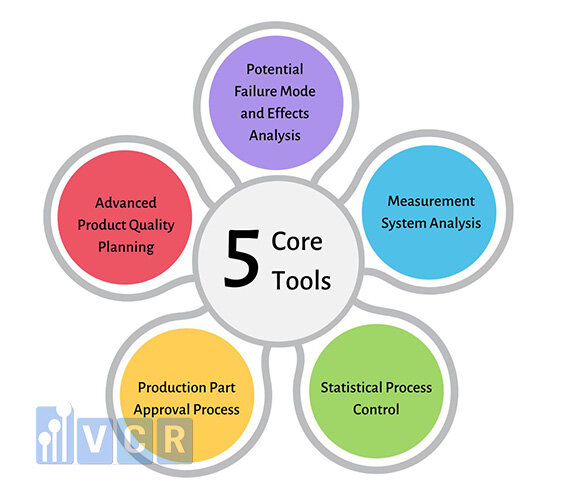
Specific Content of the 5 Core Tools
Advanced Product Quality Planning (APQP)
Advanced Product Quality Planning (APQP) is the process of successfully establishing new products and processes to meet customer requirements. APQP helps identify critical quality sub-systems from a customer's perspective. PPAP is the output of APQP processes and techniques.
The following are the 5 stages of APQP:
- Planning and Program Definition Phase
- Product Design and Development Verification Phase
- Process Design and Development Verification Phase
- Product and Process Validation Phase
- Launch, Assessment, and Corrective Action Phase
Potential Failure Mode and Effects Analysis (FMEA)
This is a method for identifying and prioritizing various failure mode patterns and their potential impacts.
Risks illustrate the relationship between different failure mode patterns and their potential effects. The FMEA system helps assess the value of risks within a production and design process. Some adjustments and variations in this method have been made to better suit specific processes. There are two types of FMEA: Design FMEA (DFMEA) and Process FMEA (PFMEA). Key terms in FMEA include:

- Severity: Indicates the severity level of the consequences of a specific failure mode.
- Occurrence: Represents the probability of a specific failure mode occurring. It may be based on existing data within the organization or on the experiences or estimates of those involved in the assessment.
- Detection: Reflects the ease of detecting a failure mode once it has occurred. For example, physical shape defects in a product are easy to detect, but some malfunctions or circuit board errors may manifest after the product has been delivered to the customer.
Based on severity, occurrence, and detection ratings, the organization determines a Risk Priority Number (RPN) for each failure mode and identifies priorities for taking actions to minimize risks.
Measurement System Analysis (MSA)
Measurement System Analysis (MSA) is the practice of using statistical tools, such as Gauge R&R, to determine whether a measurement system is capable of accurately measuring. The purpose of MSA is to ensure that a chosen measurement system provides reliable results with repeatability and reproducibility.
Statistical Process Control (SPC)
Statistical Process Control (SPC) is a method of collecting measurements on the production process or product as manageable, quality-oriented data. This data is used to monitor process control levels and production quality. SPC is a type of feedback system that enables organizations to implement prevention strategies to control the quality output of the production process.
The 4 elements of an SPC system are:
- Process
- Performance information
- In-process actions
- Output actions.

Production Part Approval Process (PPAP)
The Production Part Approval Process (PPAP) is a standardized process in the automotive and aerospace industries that helps manufacturers and suppliers communicate and gain approval for designs and production processes before, during, and after production. For production process approval requirements, PPAP is typically distinguished through the following 5 levels:
- Level 1: Requires submission of a Part Submission Warrant (PSW) sent to the customer.
- Level 2: PSW with limited partial samples and supporting data.
- Level 3: PSW with full part samples and complete supporting data.
- Level 4: PSW and other requirements as proposed by the customer.
- Level 5: PSW with full part samples and complete supporting data available for review at the supplier's production location.
The sequence of applying the 5 Core Tools
The sequence of applying the 5 Core Tools is as follows: APQP - FMEA - MSA - SPC - PPAP
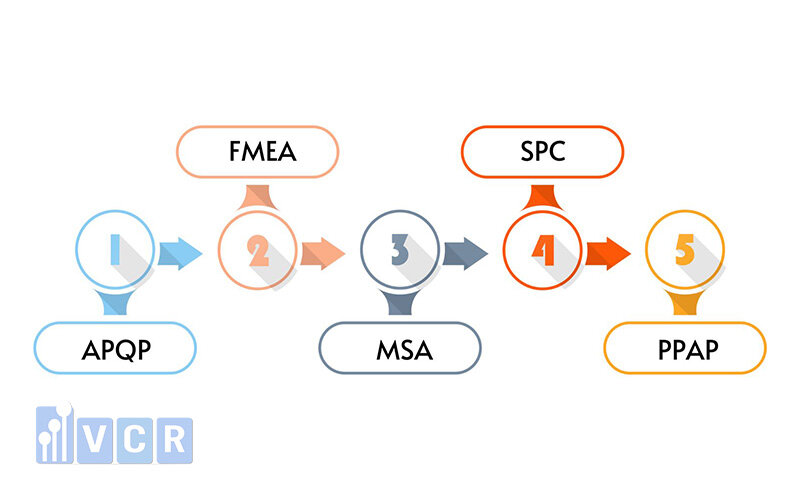
In IATF 16949, these tools will be applied in stages as depicted in the chart above. Furthermore, they must always be used even during Mass Production, as the quality system must be continuously monitored and improved.
When to use the 5 Core Tools?
The 5 Core Tools are used in the following situations:
- During the research and development stage of a product.
- During the introduction of a new product.
- When addressing issues in the production process.
- When implementing technical changes in the manufacturing process.
Guidelines for Applying the 5 Core Tools
- The design team will determine measurement dimensions, material characteristics, and applicable tolerances, including severity and its impact on customers.
- This information will be handed over to manufacturing engineers or process engineers before final design or drawings are completed.
- Once the engineering team receives this information, they will incorporate it into the manufacturing process chart.
- Subsequently, this information is transferred into the Process FMEA (PFMEA) in the form of failure modes for relevant steps/processes.
- Analyze risks that could prevent the production process from meeting specified characteristics.
- The Production/Process Management team will collaborate with the design team to discuss issues based on specifications and data.
- Develop a control plan, including special control measures for identifying, verifying errors, timely root cause detection, and corrective actions.
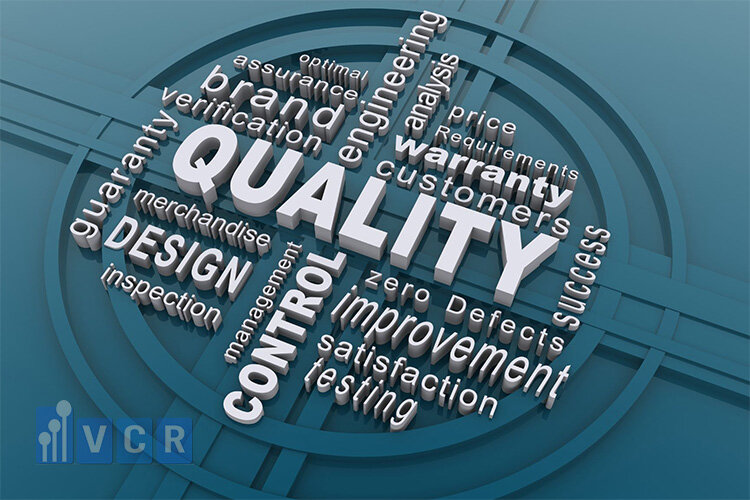
Documentation for the 5 Core Tools
Documentation for the 5 Core Tools in IATF 16949 is presented through a set of materials consisting of 5 guidebooks produced by the Automotive Industry Action Group (AIAG).
PN











